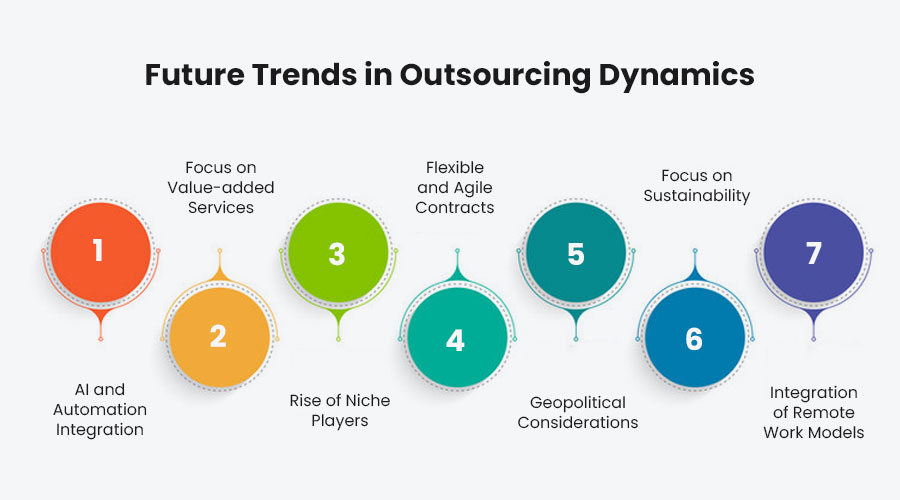Table of Contents
Introduction to Outsourcing: USA to India
In the global landscape of business, outsourcing has become a pivotal strategy for companies aiming to streamline operations, cut costs, and tap into specialized expertise. Among the most prominent destinations for outsourcing, India has emerged as a powerhouse, attracting a significant share of outsourced tasks and projects from the USA. In this article, we delve into the intricacies of outsourcing from the USA to India, exploring its motivations, benefits, and challenges.
Understanding Outsourcing:
Outsourcing refers to the practice of contracting out specific business functions or processes to external vendors rather than handling them in-house. It enables companies to leverage the capabilities and resources of third-party service providers, often located in different countries, to achieve operational efficiencies and focus on core business activities.
The Appeal of India:
India has solidified its position as a leading outsourcing destination due to several compelling factors:
- Cost Efficiency: One of the primary drivers behind outsourcing to India is cost savings. Labor costs in India are significantly lower compared to the USA, making it an attractive option for businesses looking to reduce expenses without compromising on quality.
- Skilled Workforce: India boasts a large pool of highly skilled professionals across various domains, including IT, finance, customer service, and more. The country’s emphasis on education and technical training has produced a talented workforce proficient in English and equipped with the latest technological know-how.
- Time Zone Advantage: India’s time zone difference allows for round-the-clock productivity and support, facilitating seamless collaboration between teams in the USA and India. This enables faster turnaround times and enhances operational efficiency.
- Robust Infrastructure: Over the years, India has made significant investments in its infrastructure, particularly in IT and telecommunications. This infrastructure backbone ensures reliable connectivity and smooth communication channels, essential for successful outsourcing partnerships.
Popular Outsourced Services:
A wide array of services is commonly outsourced from the USA to India, including:
- Information Technology (IT) Services: Software development, application maintenance, cloud computing, and cybersecurity are among the top IT services outsourced to India.
- Business Process Outsourcing (BPO): Customer support, back-office operations, data entry, and financial services are frequently outsourced to BPO firms in India.
- Knowledge Process Outsourcing (KPO): High-value tasks such as market research, analytics, legal services, and content creation are often entrusted to KPO providers in India.
Challenges and Mitigation Strategies:
While outsourcing to India offers numerous benefits, it also presents certain challenges, including:
- Cultural Differences: Varied cultural norms and communication styles may lead to misunderstandings or misalignment of expectations. Building cultural awareness and fostering open communication channels can help mitigate these challenges.
- Data Security Concerns: Protecting sensitive data and intellectual property is paramount. Implementing robust security protocols, including encryption technologies and stringent access controls, can safeguard confidential information.
- Quality Control: Ensuring consistent quality standards across geographically dispersed teams requires proactive monitoring and feedback mechanisms. Establishing clear performance metrics and conducting regular evaluations can help maintain quality levels.
Economic Factors Driving Outsourcing Trends
In today’s dynamic global economy, outsourcing has become a pivotal strategy for businesses seeking to remain competitive and agile. This practice involves delegating specific tasks or processes to external parties, often located in different countries, to leverage cost efficiencies, access specialized skills, and streamline operations. The outsourcing landscape is constantly evolving, driven by a multitude of economic factors that shape industry trends and influence decision-making processes. Let’s delve into some key economic drivers behind the outsourcing phenomenon.
- Cost Efficiency: One of the primary reasons companies opt for outsourcing is to reduce operational costs. Outsourcing allows businesses to access lower labor costs in regions where wages are comparatively lower. By relocating certain tasks to offshore locations, companies can capitalize on cost differentials without compromising quality. Moreover, outsourcing eliminates the need for hefty investments in infrastructure and technology, further contributing to cost savings.
- Access to Skilled Talent: In today’s knowledge-based economy, access to skilled talent is crucial for sustaining growth and innovation. Outsourcing provides businesses with access to a vast pool of specialized talent that may not be readily available domestically. Whether it’s software development, digital marketing, or customer support, outsourcing enables companies to tap into expertise that aligns with their specific requirements. This access to a diverse talent pool fosters innovation and enhances the overall competitiveness of businesses.
- Scalability and Flexibility: Economic uncertainties and fluctuating market demands underscore the importance of scalability and flexibility in business operations. Outsourcing offers a scalable solution whereby companies can adjust resource allocation according to their evolving needs. Whether scaling up during peak seasons or downsizing to optimize costs during downturns, outsourcing provides the flexibility to adapt quickly to changing market dynamics. This agile approach enables businesses to remain responsive and resilient in the face of economic challenges.
- Focus on Core Competencies: Outsourcing non-core functions allows companies to redirect their focus and resources towards core competencies that drive value and differentiation. By offloading routine tasks such as payroll processing, IT support, or administrative functions, businesses can concentrate on strategic initiatives that are instrumental in achieving long-term objectives. This strategic realignment enhances efficiency, fosters innovation, and ultimately enhances the organization’s competitive advantage in the market.
- Globalization and Market Expansion: The interconnectedness of global markets has significantly influenced outsourcing trends. Businesses are increasingly leveraging outsourcing as a strategic tool for expanding their global footprint and penetrating new markets. By partnering with offshore service providers, companies can gain insights into local market dynamics, cultural nuances, and regulatory landscapes, facilitating smoother market entry and expansion initiatives. Outsourcing serves as a gateway to international markets, enabling businesses to capitalize on growth opportunities beyond borders.
Advantages of Outsourcing to India
In today’s globalized economy, businesses are constantly seeking ways to streamline operations, enhance efficiency, and reduce costs. One increasingly popular strategy that many companies are turning to is outsourcing. Among the top destinations for outsourcing, India stands out as a preferred choice for a multitude of reasons. In this article, we’ll delve into the advantages of outsourcing to India and why it continues to be a strategic move for businesses worldwide.
- Cost Efficiency: One of the primary reasons why companies choose to outsource to India is its cost-effectiveness. Labor costs in India are significantly lower compared to many Western countries, allowing businesses to achieve substantial savings without compromising on quality. This cost advantage extends across various industries, including information technology, customer support, finance, and back-office operations.
- Skilled Workforce: India boasts a vast pool of highly skilled and educated professionals. The country’s emphasis on education, particularly in STEM (Science, Technology, Engineering, and Mathematics) fields, has resulted in a large talent pool proficient in various domains. From software developers and engineers to financial analysts and content writers, Indian professionals bring a diverse skill set and expertise to the table, enabling businesses to access top-notch talent for their projects.
- 24/7 Operations: India’s geographical location provides a significant advantage for businesses requiring round-the-clock operations or customer support services. The time zone difference between India and countries like the United States enables companies to extend their working hours, ensuring continuous workflow and enhanced customer service. This seamless operation can lead to improved efficiency and increased customer satisfaction.
- Focus on Quality: Despite the cost advantage, outsourcing to India does not mean compromising on quality. Indian outsourcing firms adhere to international quality standards and certifications, ensuring that deliverables meet or exceed client expectations. Many Indian companies invest in continuous training and development programs to keep their workforce updated with the latest technologies and industry trends, thereby delivering high-quality solutions consistently.
- Scalability and Flexibility: One of the inherent benefits of outsourcing to India is the scalability it offers. Whether a business needs to ramp up operations during peak seasons or scale down during lean periods, outsourcing partners in India can easily adjust to meet fluctuating demands. This flexibility allows companies to adapt quickly to changing market conditions without the hassle of hiring and training additional staff.
- Focus on Core Competencies: Outsourcing non-core functions to India enables companies to focus their resources and efforts on core business activities. By delegating tasks such as IT maintenance, payroll processing, or administrative support to reliable outsourcing partners, businesses can streamline operations, enhance productivity, and drive innovation in their core areas of expertise.
- Access to Advanced Technology: India’s rapidly growing technology sector is another compelling reason for outsourcing to the country. With a thriving ecosystem of tech startups, established IT firms, and research institutions, India offers access to cutting-edge technologies and innovative solutions. Outsourcing partners in India leverage advanced tools, software, and infrastructure to deliver state-of-the-art services that can give businesses a competitive edge in the market.
Cost-Effectiveness: Comparing Labor Costs
In the realm of business operations, cost-effectiveness stands as a cornerstone for sustainable growth and profitability. Among the myriad factors that influence cost structures, labor costs play a pivotal role. Whether you’re a burgeoning startup or a seasoned enterprise, understanding the dynamics of labor costs and how they impact your bottom line is paramount. In this article, we delve into the intricacies of comparing labor costs to unveil insights that can drive informed decision-making.
1. Defining Labor Costs: Before delving into comparisons, it’s crucial to comprehend what constitutes labor costs. Labor costs encapsulate all expenses associated with employing personnel within an organization. This encompasses wages, salaries, benefits, bonuses, payroll taxes, and any other expenses directly tied to human resources.
2. Factors Influencing Labor Costs: Labor costs are influenced by a myriad of factors, including geographical location, industry standards, skill level, and prevailing economic conditions. For instance, labor costs in developed countries such as the United States or European nations are substantially higher compared to emerging economies like India or China due to variations in wage rates and regulatory frameworks.
3. Comparative Analysis: Domestic vs. Outsourced Labor: One of the most common comparisons in labor costs revolves around domestic versus outsourced labor. Domestic labor often commands higher wages and entails additional expenses such as healthcare, retirement benefits, and regulatory compliance. Conversely, outsourcing labor to offshore destinations, commonly referred to as offshoring, can significantly reduce labor costs due to lower wage rates and fewer regulatory burdens. However, it’s imperative to weigh the cost savings against potential drawbacks such as communication barriers, quality concerns, and geopolitical risks.
4. Automation and Technological Advancements: In recent years, the advent of automation and technological advancements has reshaped the labor landscape. Automation offers the promise of increased efficiency, reduced errors, and lower labor costs over the long term. While initial investments in automation technologies may seem daunting, the potential for cost savings through streamlined operations and enhanced productivity cannot be overstated.
5. The Role of Skilled Labor: In certain industries and sectors, skilled labor commands premium wages due to specialized knowledge and expertise. While employing skilled professionals may entail higher upfront costs, their contributions often translate into greater value creation and innovation, thereby bolstering overall competitiveness and profitability.
6. Striking a Balance: Achieving cost-effectiveness in labor management necessitates striking a delicate balance between cost optimization and value creation. While minimizing labor costs is imperative for financial viability, it’s equally crucial to invest in human capital development, employee well-being, and talent retention initiatives to foster a conducive work environment and sustain long-term growth.
Technological Infrastructure and Support
In today’s fast-paced digital world, having a robust technological infrastructure and reliable support system is essential for businesses aiming to thrive and stay ahead of the competition. Technological infrastructure encompasses the hardware, software, networks, and services required to support the digital operations of a business. Meanwhile, dependable support ensures that these systems function smoothly and efficiently, providing businesses with the necessary assistance when encountering challenges or seeking to optimize their technological resources.
The significance of technological infrastructure and support cannot be overstated. They serve as the backbone of modern enterprises, enabling seamless communication, data management, and operational efficiency. Whether it’s a small startup or a multinational corporation, every business relies on technology to streamline processes, reach customers, and drive innovation.
One of the key benefits of investing in a robust technological infrastructure is the ability to enhance productivity. With advanced hardware and software solutions in place, tasks that once required significant time and effort can now be automated or streamlined, freeing up valuable resources for other critical activities. For example, cloud-based services allow for scalable storage and computing power, enabling businesses to adapt to changing demands without the need for costly hardware upgrades.
Moreover, a solid technological infrastructure facilitates collaboration and communication among employees, regardless of their location. With the rise of remote work, having reliable networks and communication tools is more important than ever. Video conferencing, instant messaging, and collaborative platforms empower teams to work together effectively, even when physically separated.
However, technological infrastructure alone is not sufficient. Businesses also require prompt and effective support to address technical issues and ensure uninterrupted operations. A dedicated support team can provide assistance with software updates, troubleshooting hardware problems, and implementing security measures to safeguard against cyber threats. By proactively addressing potential issues and minimizing downtime, businesses can maintain high levels of productivity and customer satisfaction.
Furthermore, technology support services can offer valuable insights and guidance to help businesses make informed decisions about their IT investments. Whether it’s recommending new technologies, optimizing existing systems, or providing training to employees, knowledgeable support professionals play a crucial role in maximizing the return on investment in technology.
In the realm of e-commerce, technological infrastructure and support are particularly critical. Online retailers rely on robust systems to manage inventory, process transactions, and deliver products to customers efficiently. Any disruption in these operations can result in lost sales and damage to the brand’s reputation. Therefore, investing in reliable infrastructure and responsive support services is essential for e-commerce businesses to thrive in today’s competitive market.
Cultural Compatibility and Communication
In today’s interconnected world, cultural compatibility and effective communication are paramount for fostering understanding and collaboration across diverse communities. Whether in business, education, or everyday interactions, the ability to bridge cultural gaps enhances relationships and drives positive outcomes. This article explores the significance of cultural compatibility and offers insights into strategies for fostering effective communication across cultural boundaries.
Understanding Cultural Compatibility:
Cultural compatibility refers to the degree to which individuals or groups share similar values, beliefs, and norms. It encompasses aspects such as communication styles, attitudes toward authority, and approaches to problem-solving. When individuals from different cultures interact, disparities in cultural compatibility can lead to misunderstandings, conflict, and barriers to cooperation.
Cultural compatibility is not about erasing differences but rather acknowledging and respecting them. It involves recognizing the unique perspectives and practices of diverse cultures while finding common ground for meaningful interaction. Embracing cultural diversity enriches experiences and broadens horizons, fostering a more inclusive and harmonious society.
The Role of Communication:
Effective communication lies at the heart of cultural compatibility. It serves as the bridge that connects people from different cultural backgrounds, facilitating mutual understanding and collaboration. However, communication across cultures can be complex due to differences in language, non-verbal cues, and social norms.
To navigate cultural differences successfully, it’s essential to adopt a communication approach that is sensitive to diverse cultural perspectives. This involves active listening, empathy, and a willingness to adapt one’s communication style to accommodate the preferences of others. Building rapport and trust are crucial for establishing meaningful connections across cultural boundaries.
Strategies for Enhancing Cultural Compatibility and Communication:
- Cultural Awareness Training: Providing training and education on cultural diversity and communication can increase awareness and sensitivity among individuals and organizations. This includes learning about cultural norms, taboos, and communication styles prevalent in different cultures.
- Respect for Differences: Cultivating an environment of respect and acceptance fosters a culture of inclusivity where individuals feel valued for their unique perspectives and contributions. Encouraging open dialogue and embracing diversity strengthens relationships and promotes cultural compatibility.
- Flexibility and Adaptability: Flexibility in communication involves being open to different ways of expressing ideas and opinions. Adapting one’s communication style to align with the preferences of others demonstrates respect and enhances mutual understanding.
- Clarify Intentions: Clear communication is essential for avoiding misunderstandings and misinterpretations. When interacting across cultures, it’s important to clarify intentions, ask for feedback, and ensure that messages are understood correctly.
- Foster Cross-Cultural Relationships: Actively seeking opportunities to engage with individuals from diverse backgrounds fosters cross-cultural understanding and empathy. Building relationships based on mutual respect and trust lays the foundation for effective communication and collaboration.
Risks and Challenges in Outsourcing
In today’s global economy, outsourcing has become a prevalent strategy for businesses looking to streamline operations, reduce costs, and access specialized skills. However, despite its numerous benefits, outsourcing also comes with its fair share of risks and challenges that businesses must navigate effectively. In this article, we’ll delve into some of the key risks and challenges associated with outsourcing and explore strategies to mitigate them.
- Quality Control: One of the primary concerns with outsourcing is maintaining the quality of work delivered by external vendors. Differences in work standards, communication barriers, and cultural disparities can all contribute to inconsistencies in quality. To address this challenge, businesses should establish clear quality standards, provide detailed instructions, conduct regular performance evaluations, and foster open communication channels with outsourcing partners.
- Data Security and Confidentiality: Outsourcing often involves sharing sensitive business information with third-party vendors, raising concerns about data security and confidentiality breaches. To safeguard against these risks, businesses should implement robust data protection measures, including encryption, non-disclosure agreements, access controls, and regular security audits. It’s also essential to choose outsourcing partners with a proven track record of prioritizing data security.
- Communication Barriers: Effective communication is crucial for successful outsourcing relationships, but language barriers, time zone differences, and cultural nuances can hinder communication effectiveness. To overcome these challenges, businesses should invest in tools and technologies that facilitate seamless communication, such as video conferencing, project management software, and language translation services. Additionally, establishing clear communication protocols and providing cultural sensitivity training can help bridge the gap between diverse teams.
- Dependency on Outsourcing Partners: Relying too heavily on external vendors can leave businesses vulnerable to disruptions in the supply chain, regulatory changes, and fluctuations in market conditions. To mitigate this risk, businesses should diversify their outsourcing portfolio, build strong relationships with multiple vendors, and maintain a degree of in-house expertise to ensure continuity and flexibility in operations.
- Hidden Costs and Overhead: While outsourcing can offer cost savings in certain areas, it’s essential to carefully evaluate the total cost of outsourcing, including hidden fees, overhead expenses, and unforeseen costs associated with contract negotiations, transition periods, and project delays. Conducting a thorough cost-benefit analysis and establishing transparent pricing agreements upfront can help avoid financial surprises down the line.
- Legal and Compliance Risks: Outsourcing activities may subject businesses to various legal and compliance risks, including regulatory non-compliance, intellectual property disputes, and contractual breaches. To mitigate these risks, businesses should ensure that outsourcing contracts are legally sound, clearly define rights and responsibilities, and conduct due diligence on potential vendors to verify their compliance with relevant laws and regulations.
- Loss of Control and Flexibility: Entrusting critical business functions to external vendors can sometimes result in a loss of control over processes, timelines, and decision-making. To maintain control and flexibility, businesses should establish robust governance frameworks, define clear performance metrics and service level agreements (SLAs), and regularly monitor and evaluate the performance of outsourcing partners to ensure alignment with business objectives.
Strategies for Effective Project Management
In the dynamic landscape of modern business, project management stands as a cornerstone for achieving organizational goals efficiently. Whether it’s launching a new product, implementing a marketing campaign, or executing a complex IT project, effective project management is essential for success. However, mastering this art requires more than just planning and execution; it demands a strategic approach that aligns resources, timelines, and goals. Let’s delve into some key strategies for effective project management.
- Clear Definition of Objectives: Every successful project starts with a clear understanding of its objectives. Project managers must work closely with stakeholders to define goals, deliverables, timelines, and success criteria. This clarity ensures that everyone involved is on the same page from the outset, minimizing misunderstandings and maximizing efficiency.
- Comprehensive Planning: Thorough planning is the backbone of effective project management. This involves breaking down the project into smaller tasks, estimating resource requirements, establishing timelines, and identifying potential risks. Tools like Gantt charts, work breakdown structures (WBS), and risk registers can be invaluable in this stage, providing a roadmap for the project’s execution.
- Effective Communication: Communication lies at the heart of successful project management. Project managers must foster open and transparent communication channels among team members, stakeholders, and other relevant parties. Regular meetings, status updates, and progress reports help keep everyone informed and engaged, facilitating smoother collaboration and problem-solving.
- Resource Allocation and Management: Efficient allocation and management of resources, including personnel, finances, and materials, are crucial for project success. Project managers must identify resource constraints early on and make strategic decisions to optimize resource utilization throughout the project lifecycle. This may involve prioritizing tasks, reallocating resources as needed, or seeking additional support when required.
- Risk Management: No project is without risks, but effective project management involves identifying, assessing, and mitigating these risks proactively. Project managers should conduct risk assessments regularly, anticipate potential challenges, and develop contingency plans to address them. By staying vigilant and responsive to emerging risks, project teams can minimize disruptions and stay on track towards their objectives.
- Adaptability and Flexibility: In today’s fast-paced business environment, adaptability is key to successful project management. Project managers must be prepared to pivot and adjust their plans in response to changing circumstances, whether it’s shifting priorities, evolving market conditions, or unexpected setbacks. Flexibility allows project teams to stay agile and resilient in the face of uncertainty.
- Continuous Monitoring and Evaluation: Effective project management doesn’t end with execution; it requires ongoing monitoring and evaluation to ensure that the project stays on course. Project managers should establish performance metrics, track progress against targets, and conduct regular reviews to identify areas for improvement. By staying proactive and data-driven, project teams can make informed decisions and drive continuous improvement.
- Stakeholder Engagement and Feedback: Engaging stakeholders throughout the project lifecycle is essential for maintaining alignment and gaining valuable insights. Project managers should actively seek feedback from stakeholders, address their concerns, and incorporate their input into decision-making processes. By fostering a collaborative and inclusive approach, project teams can enhance stakeholder buy-in and ultimately, project success.
Future Trends in Outsourcing Dynamics
In an ever-evolving global landscape, the dynamics of outsourcing continue to shape industries and redefine business strategies. As we step into the future, several trends are poised to revolutionize the outsourcing landscape, offering both challenges and opportunities for businesses worldwide.
- AI and Automation Integration: The future of outsourcing lies in the seamless integration of artificial intelligence (AI) and automation technologies. Businesses are increasingly leveraging AI-driven solutions to streamline processes, enhance productivity, and reduce costs. From robotic process automation (RPA) to machine learning algorithms, outsourcing partners will need to adapt and incorporate these technologies into their service offerings to stay ahead of the curve.
- Focus on Value-added Services: With basic tasks increasingly automated, the focus of outsourcing will shift towards value-added services. Clients will demand partners who can provide strategic insights, innovation, and specialized expertise. Outsourcing vendors will need to invest in upskilling their workforce to deliver high-value services such as data analytics, market research, and consultancy.
- Rise of Niche Players: As the outsourcing market matures, we can expect to see the emergence of niche players catering to specific industries or functions. These specialized vendors will offer tailored solutions and deep domain expertise, providing clients with more personalized and effective outsourcing options. Collaboration between niche players and larger outsourcing firms may also become prevalent to deliver comprehensive solutions.
- Flexible and Agile Contracts: Traditional long-term outsourcing contracts are giving way to more flexible and agile arrangements. Businesses are seeking partners who can adapt quickly to changing market dynamics and technological advancements. Shorter-term contracts, outcome-based pricing models, and greater flexibility in scaling services up or down will become the norm, fostering a more dynamic outsourcing ecosystem.
- Geopolitical Considerations: Geopolitical factors such as trade tensions, regulatory changes, and data security concerns will continue to influence outsourcing decisions. Businesses will need to assess the geopolitical risks associated with outsourcing destinations and adapt their strategies accordingly. This may lead to a diversification of outsourcing locations and a greater emphasis on risk management measures.
- Focus on Sustainability: With increasing awareness of environmental and social issues, sustainability will become a key consideration in outsourcing partnerships. Clients will prioritize vendors who demonstrate a commitment to ethical business practices, environmental sustainability, and corporate social responsibility. Outsourcing providers will need to align their operations with sustainable practices to remain competitive in the market.
- Integration of Remote Work Models: The COVID-19 pandemic has accelerated the adoption of remote work models, and this trend is likely to continue in the future. Outsourcing partners will need to invest in robust infrastructure and technologies to support remote collaboration and ensure seamless communication across geographically dispersed teams. Flexible work arrangements and remote delivery capabilities will be essential for meeting the evolving needs of clients.
Top Outsourcing Projects Development Companies
In today’s fast-paced digital landscape, businesses are constantly seeking innovative ways to stay ahead of the competition. Outsourcing projects development has emerged as a strategic solution for companies looking to streamline operations, reduce costs, and access specialized expertise. However, with a plethora of outsourcing companies vying for attention, it can be challenging to identify the top players in the field. To help you navigate this dynamic industry, we’ve compiled a list of the top outsourcing projects development companies that are paving the way for success.
-
-
Next Big Technology:

Focus Area
- Mobile App Development
- App Designing (UI/UX)
- Software Development
- Web Development
- AR & VR Development
- Big Data & BI
- Cloud Computing Services
- DevOps
- E-commerce Development
Industries Focus
- Art, Entertainment & Music
- Business Services
- Consumer Products
- Designing
- Education
- Financial & Payments
- Gaming
- Government
- Healthcare & Medical
- Hospitality
- Information Technology
- Legal & Compliance
- Manufacturing
- Media
-
- Infosys: Renowned for its commitment to excellence and client satisfaction, Infosys is another top contender in the outsourcing projects development space. Their robust delivery capabilities and strong focus on quality make them a preferred partner for businesses seeking to accelerate their digital transformation journey.
- Cognizant: Cognizant stands out for its agile approach to project development and unwavering dedication to delivering value to clients. Their global delivery model ensures seamless collaboration across geographies, allowing businesses to tap into a vast pool of talent and resources.
- Wipro: With decades of experience in the IT outsourcing industry, Wipro has earned a reputation for reliability and innovation. Their end-to-end project development services encompass everything from ideation to implementation, helping clients bring their vision to life with precision and efficiency.
- Tata Consultancy Services (TCS): TCS combines domain expertise with advanced technology capabilities to deliver transformative outsourcing solutions. Their customer-centric approach and focus on continuous improvement set them apart as a trusted partner for businesses seeking sustainable growth.
- IBM Global Services: Leveraging the power of emerging technologies like AI and blockchain, IBM Global Services empowers businesses to drive innovation and achieve operational excellence. Their proven track record of success and extensive industry partnerships make them a preferred choice for outsourcing projects development.
- Capgemini: Capgemini’s collaborative approach to project development fosters creativity and innovation, enabling businesses to stay ahead in today’s dynamic market landscape. With a strong emphasis on agility and scalability, they help clients adapt to change and seize new opportunities with confidence.
- HCL Technologies: HCL Technologies specializes in delivering customized outsourcing solutions that address the unique challenges faced by each client. Their customer-centric approach and focus on driving business outcomes make them a trusted partner for organizations across industries.
- DXC Technology: DXC Technology offers end-to-end project development services that enable businesses to thrive in the digital age. Their comprehensive suite of solutions, combined with deep industry expertise, positions them as a strategic partner for companies embarking on their digital transformation journey.
- Tech Mahindra: Tech Mahindra’s innovative approach to outsourcing projects development is fueled by a passion for technology and a commitment to excellence. With a strong focus on collaboration and continuous improvement, they help clients achieve their business objectives with speed and agility.
FSAQs On Outsourcing Projects Development
In the dynamic landscape of business, outsourcing projects development has become a strategic choice for many organizations aiming to streamline operations, cut costs, and leverage specialized expertise. However, before diving into the outsourcing realm, it’s essential to address some fundamental questions. Here are the FAQs (Frequently Asked Questions) to illuminate your path towards successful project outsourcing:
- What is outsourcing projects development? Outsourcing projects development involves delegating specific tasks, processes, or entire projects to external service providers or offshore teams. It allows businesses to access a broader talent pool, reduce operational overheads, and focus on core competencies.
- What types of projects can be outsourced? Virtually any project can be outsourced, ranging from software development and IT services to manufacturing, customer support, and marketing initiatives. The key is to identify tasks that can be effectively handled by external experts while aligning with organizational goals.
- What are the benefits of outsourcing projects development? Outsourcing offers numerous benefits, including cost savings through reduced labor and infrastructure expenses, access to specialized skills and technologies, accelerated project timelines, scalability, and enhanced focus on core business functions.
- What are the risks associated with outsourcing? While outsourcing presents compelling advantages, it’s crucial to be aware of potential risks such as communication challenges, quality control issues, cultural differences, data security concerns, and dependency on third-party vendors. Mitigating these risks requires thorough due diligence and effective risk management strategies.
- How do I choose the right outsourcing partner? Selecting the right outsourcing partner is critical for project success. Factors to consider include the provider’s expertise, track record, industry reputation, service offerings, scalability, communication capabilities, cultural compatibility, and adherence to quality standards. Conducting thorough research, soliciting recommendations, and performing site visits can aid in the selection process.
- What is the best outsourcing model for my project? Outsourcing models vary based on project requirements, budget constraints, and organizational preferences. Common models include offshore outsourcing, nearshore outsourcing, onshore outsourcing, and hybrid models combining aspects of each. Assessing factors such as cost, proximity, time zone differences, and regulatory compliance can help determine the most suitable model.
- How can I ensure effective communication with the outsourcing team? Effective communication is essential for successful project collaboration. Establishing clear communication channels, defining project objectives and expectations, utilizing collaboration tools and technologies, scheduling regular meetings, and fostering a culture of transparency and openness can facilitate seamless communication with the outsourcing team.
- How do I manage the outsourced project effectively? Managing outsourced projects requires robust project management practices. Implementing agile methodologies, setting clear milestones and deliverables, monitoring progress closely, maintaining regular communication, addressing issues promptly, and fostering a collaborative environment are key elements of effective project management.
- How can I measure the success of outsourced projects? Measuring the success of outsourced projects involves evaluating key performance indicators (KPIs) such as project completion time, adherence to budget, quality of deliverables, customer satisfaction levels, return on investment (ROI), and overall business impact. Regular performance reviews and post-project assessments can provide valuable insights for future initiatives.
- What are the emerging trends in outsourcing projects development? Emerging trends in outsourcing include the rise of artificial intelligence (AI) and automation, the adoption of cloud-based technologies, increased emphasis on cybersecurity measures, the growth of remote work and virtual teams, and the expansion of outsourcing beyond traditional IT services into areas such as healthcare, finance, and e-commerce.
Thanks for reading our post “Outsourcing Projects from the USA to India”. Please connect with us to learn more about The Outsourcing Projects.














